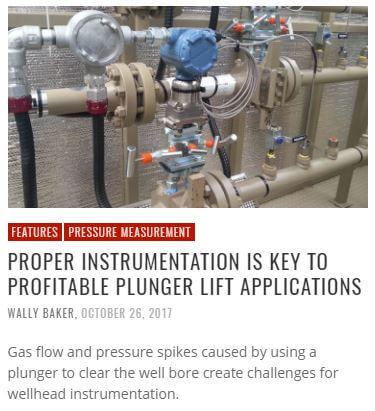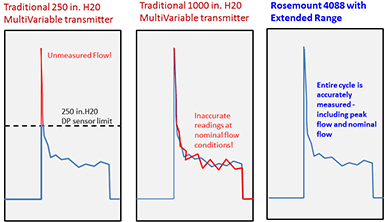 They open the article describing the phases of a gas well, especially those with high gas-to-liquid ratios:
They open the article describing the phases of a gas well, especially those with high gas-to-liquid ratios:
As the well ages, reservoir pressures decline along with flow rates and velocities. The gas-lifting characteristics change and liquids begin to collect on the walls of the production tubing. Liquids still move up and out of the well eventually, but less efficiently than before.
…
At this stage of production, the reservoir still builds enough gas pressure under the liquid slugs to overcome the hydrostatic pressure and force the slug back up the tubing. The gas expands, some of it carrying liquid and some slipping through the liquid. This carries much of the liquid out of the well bore, but it impedes the gas flow and causes a slower flow rate.
…
Eventually the flow rate falls below a critical value because there is no longer enough gas pressure to carry the liquid out, and gas production is choked off, killing the well.
The plunger in a plunger lift system:
…sized to be close to but less than the diameter of the well tube, drops to the bottom of the well, where it lands on a bumper spring. The well is shut off at the top, allowing pressure to build up. When pressure is high enough, the well is opened and the pressure can push the plunger up the tubing, lifting the liquid above it and freeing the gas flow so production can resume. The plunger is captured when it pops out and retained until the water column eventually reforms and the entire cycle repeats.
The challenge for the pressure and differential pressure (DP) measurement instrumentation measuring flow is:
…primarily because it subjects flowmeters to large spikes. When the plunger arrives at the top of the wellhead, a dramatic increase in gas flow occurs, causing a large pressure spike… This spike happens with every plunger cycle and can make maintaining gas flow measurement accuracy difficult.
If the DP flowmeter is sized for the normal operating range and not the peak flow rates:
…the volume of gas collected between the plunger blowing out and the pressure settling back down to normal levels where the flowmeter can read it again is not measured. The gas is captured, but not included in the totalized flow report for the well. This can result in tens of thousands of dollars in understated production per wellhead per year.
Conversely, sizing the DP flow meter for the peak flow rates during plunger lift operations:
…can result in a less accurate value when the flow is at normal levels. Traditional DP flowmeters with upper ranges of 1,000 inch wc [water column] working near or below 250 inch wc, where the well is flowing up to 96 percent of the time, will produce less accurate readings… Even these small scale-related inaccuracies will compound over time, resulting in missed natural gas and consequently, missed dollars.
 Wally, Eric and Tom recommend:
Wally, Eric and Tom recommend:
DP transmitters are available with upper pressure limits from 25 to 1,000 inch wc, and when applied to a flowmeter, they will have varying accuracies over those ranges. Users should examine performance data carefully as they consider how to maximize pressure measurement accuracy for their particular applications.
As discussed, choosing the best transmitter requires achieving a balance between high measurement accuracy at the nominal flow rate while still being able to work correctly during the pressure spikes inherent to plunger lift applications. Some DP flowmeters maintain higher degrees of accuracy across wider turn-down ranges than others. When evaluating performance, this should be a critical consideration.
A Rosemount 4088A MultiVariable transmitter with Extended Range is one that can meet challenging extended range applications such as oil and gas production, custody transfer and plunger-lift well systems.
Read the article for more on the economics missing flow spikes or inaccuracy due to wide ranges. You can also connect and interact with pressure and flow measurement experts in the Pressure and Flow groups in the Emerson Exchange 365 community.







